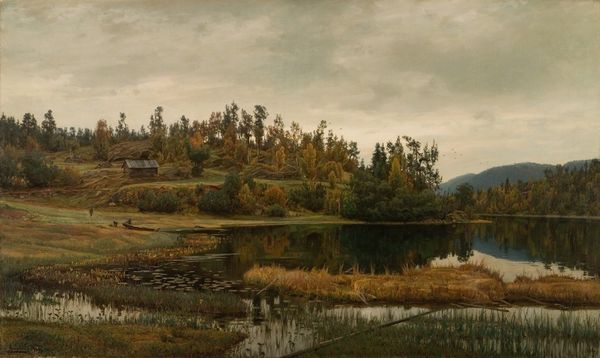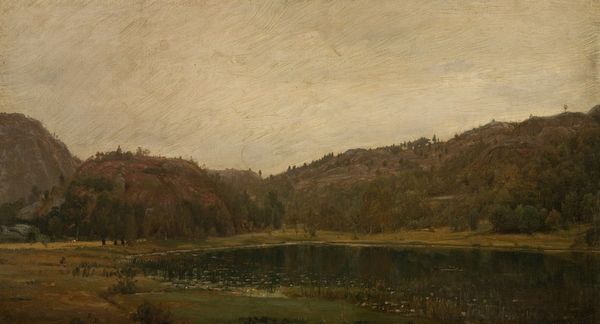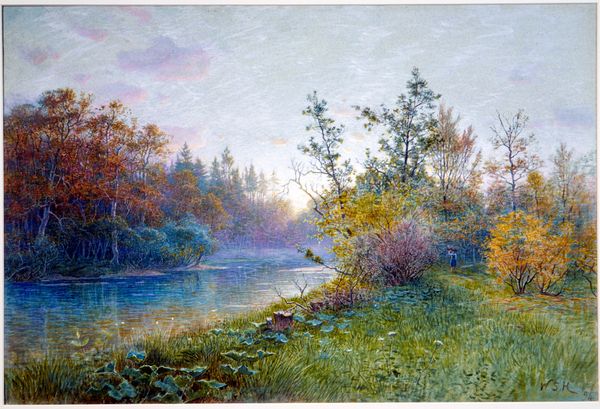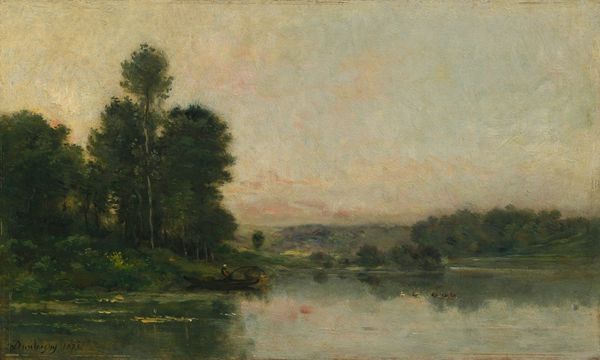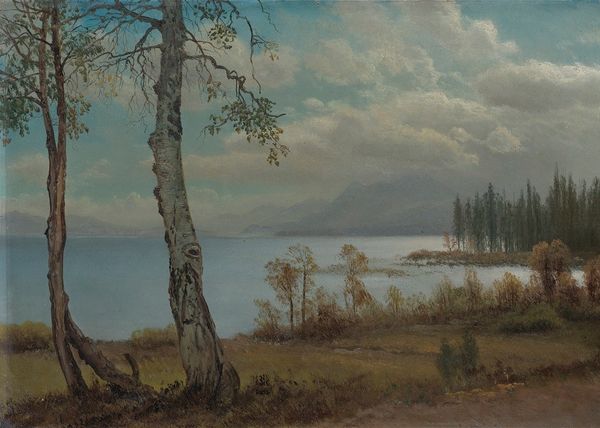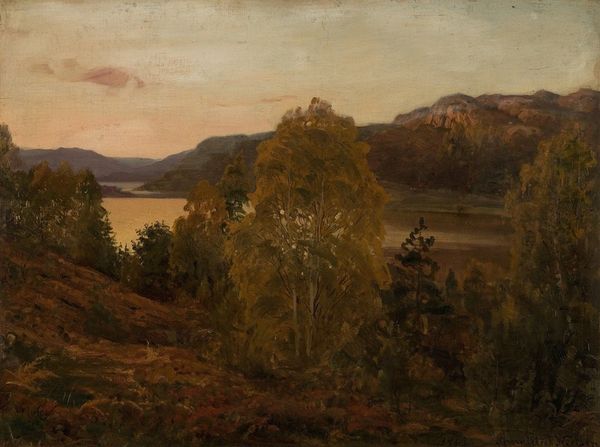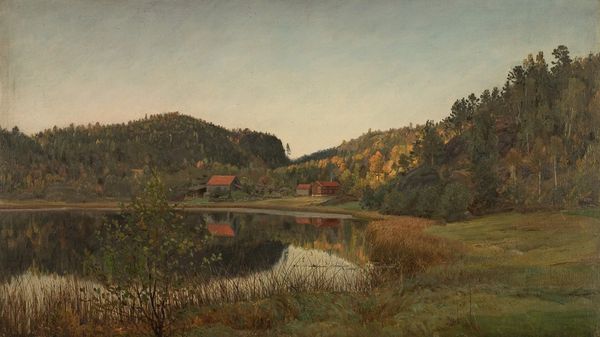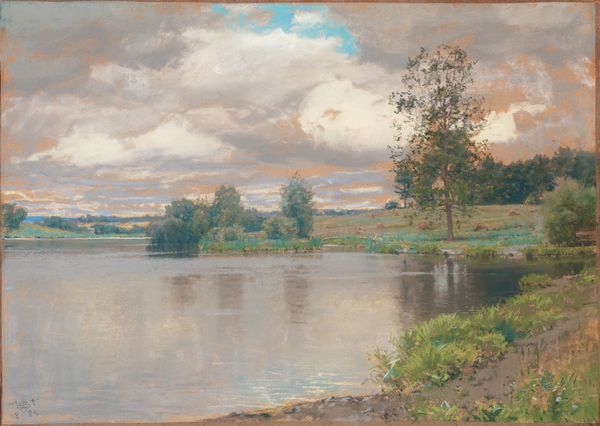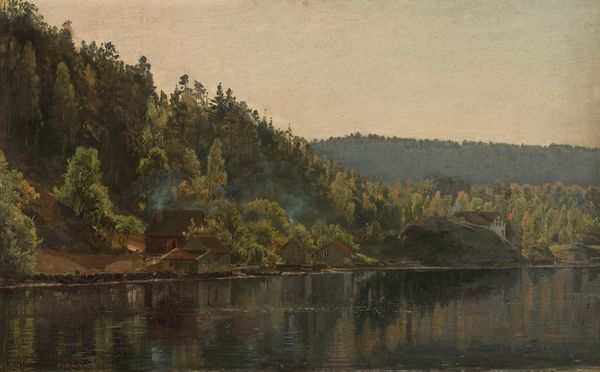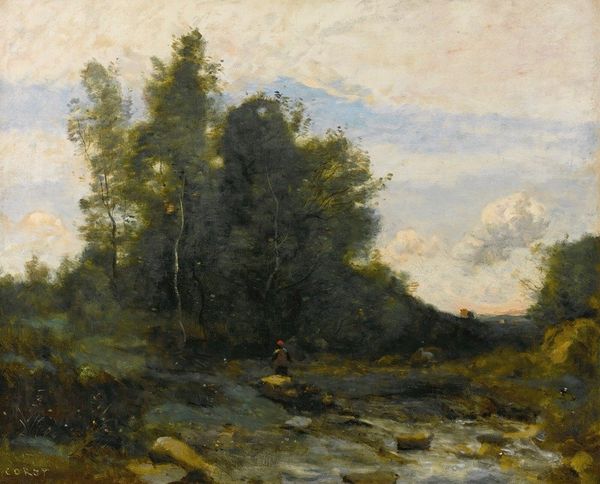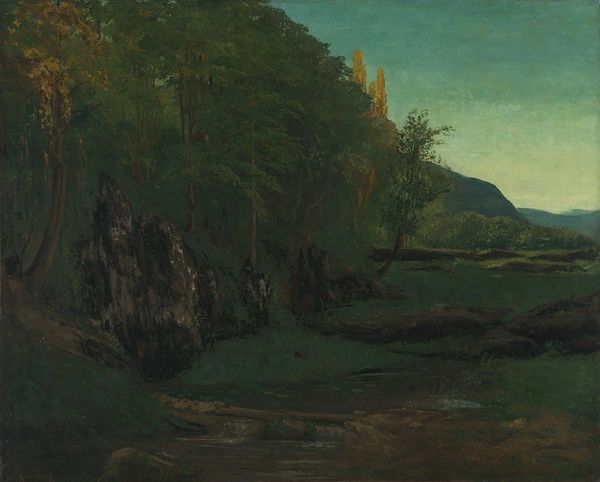
painting, oil-paint
#
painting
#
oil-paint
#
landscape
#
oil painting
#
romanticism
#
hudson-river-school
#
watercolor
#
realism
Copyright: Public Domain: Artvee
Curator: What a remarkably tranquil scene. There’s a stillness in the water that almost feels… pregnant with unspoken stories. Editor: And that feeling extends from its physical properties, surely. I wonder about the pigment used to achieve this particular shade of water—it's fascinating how Bierstadt makes it almost translucent, revealing the lakebed. How does that layering of pigment, oil paint likely, create this affect of depth and of access, even? Curator: Indeed, the materiality is important. The Hudson River School, of which Bierstadt was a leading figure, often romanticized the American landscape as untouched, divinely ordained, masking the violent process of colonial expansion. Thinking of his paintings within postcolonial studies and contemporary discourses allows one to grapple with issues related to land ownership, representation, and environmental ethics in the context of the expansion of the United States, and with its concurrent art industry, too. Editor: So, looking at this image then, this "Outlet at Lake Tahoe" by Albert Bierstadt, do we not see the industrial consumption of landscape through the artistic gaze? This "naturalness," idealized, is already a processed commodity, fit for wealthy consumption and display in drawing rooms of empire. Curator: Precisely. Bierstadt and his peers, especially white, male, western European and US citizens, not only helped define what the American landscape was, or was perceived to be, they also, quite literally, produced these places for popular and exclusive consumption and investment. Who inhabited and stewarded those lands is notably absent from their narratives, of course. That affects so much, from policy making and urban planning decisions, to issues of tourism and the destruction or conservation of specific geographies. Editor: The labor, of course, of procuring materials and producing at such a large scale, the commodification of materials and landscape through painting, surely speak to how art objects themselves perpetuate historical consumption of land and exploitation. Even a beautiful image is imbued with very earthly labor and colonial history, an oil painting with a long tail. Curator: Absolutely. Through feminist lenses and historical contextualization, it urges us to question these aesthetic choices and interrogate the absence, or erasure, of certain identities and narratives. It begs to ask, from whose perspectives are we appreciating nature and how are those viewpoints reinforced in art? Editor: We are speaking less of the object than the network of objects it participates in. And perhaps then, its usefulness hinges on an unpacking of this context, rather than a viewing pleasure. Curator: I agree. This work is an intersection between nature, identity, and historical processes. It beckons us to reflect on art’s role in shaping our cultural and ecological understanding. Editor: And also how something as mundane as pigment participates and reinforces a system. Art, and its raw elements, should have us re-evaluating our present by reflecting on its complicated and challenging past.
Comments
No comments
Be the first to comment and join the conversation on the ultimate creative platform.
